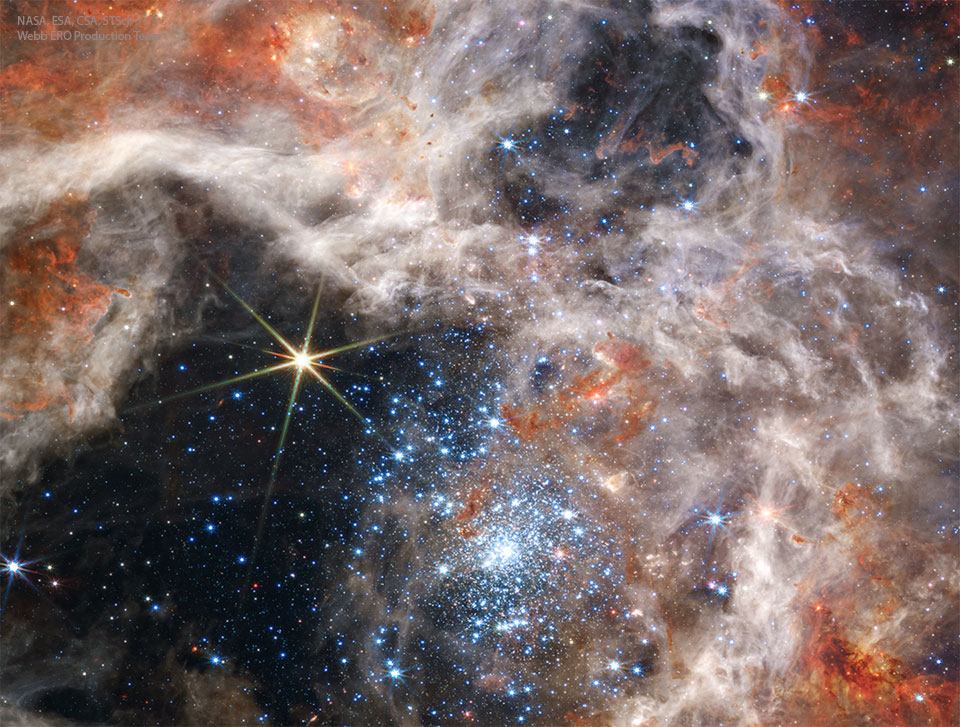2022年9月7日
Tarantula Stars R136 from Webb
Images Credit & Copyright: NASA, ESA, CSA, STScI, Webb ERO Production Team
Explanation: Near the center of a nearby star-forming region lies a massive cluster containing some of the largest and hottest stars known. Collectively known as star cluster NGC 2070, these stars are part of the vast Tarantula Nebula and were captured in two kinds of infrared light by the new Webb Space Telescope. The main image shows the group of stars at NGC 2070’s center — known as R136 — in near-infrared, light just a bit too red for humans to see. In contrast, the rollover image captures the cluster center in mid-infrared light, light closer to radio waves. Since R136’s brightest stars emit more of their light in the near infrared, they are much more prominent on that image. This LMC cluster’s massive stars emit particle winds and energetic light that are evaporating the gas cloud from which they formed. The Webb images, released yesterday, shows details of R136 and its surroundings that have never been seen before, details that are helping humanity to better understanding of how all stars are born, evolve and die.
Tomorrow’s picture: open space
韦伯太空望远镜的狼蛛星群R136
影像提供与版权: NASA, ESA, CSA, STScI, Webb ERO Production Team
说明: 在离我们不远的一个恒星形成区之中心附近,有个拥有现知最大最炽热恒星的大质量星团。这些恒星合称为星团NGC 2070,为庞大的狼蛛星云的一部分,而最近刚上线的韦伯太空望远镜,在二个不同的红外光波段为它们拍照。近红外光主影像所显示的NGC 2070中心恒星群是R136,为有点太红因此人类肉眼不得见的景观。作为对比的轮换影像,在较接近无线电波的中红外光波段呈现星团的中心区。由于R136最明亮的恒星发出较强的近红外光,因此它们在主图里远更突出。这个大麦哲伦星系的星团之大质量恒星,所发出的粒子恒星风和高能星光,正在蒸发孕育它们的气体云。这幅刚在昨天发布的韦伯望远镜影像,呈现了R136及其周围环境前所未见的细节,而这些细节,有助于人类更深入了解恒星是如何诞生、演化及死亡。
明日的图片: open space







